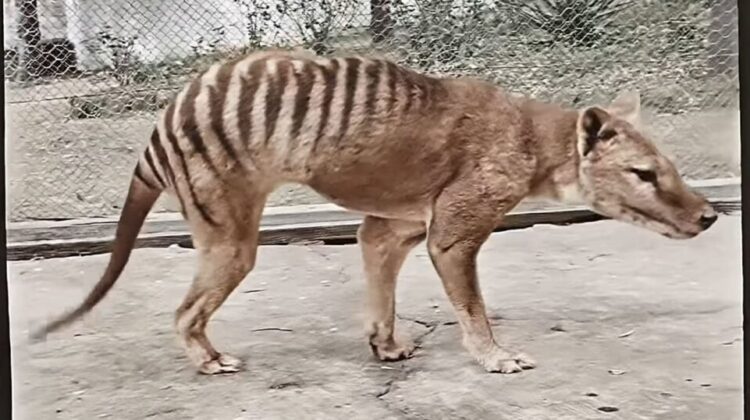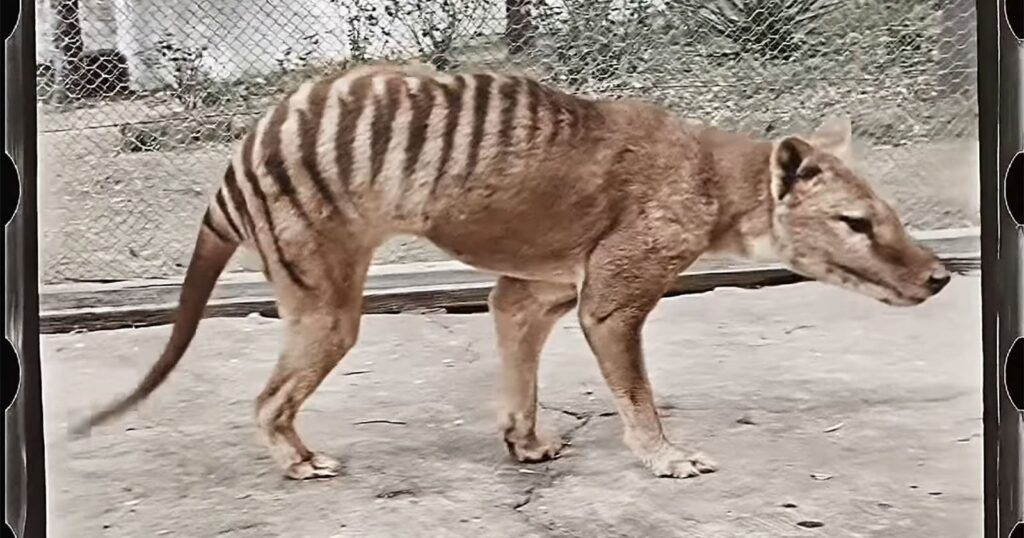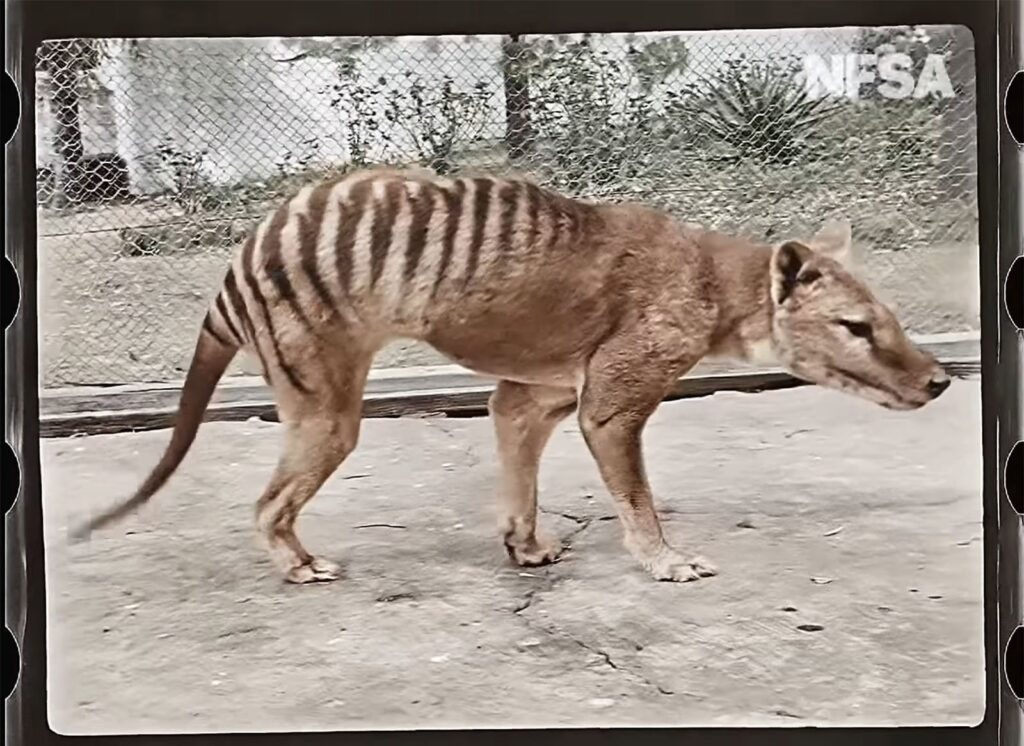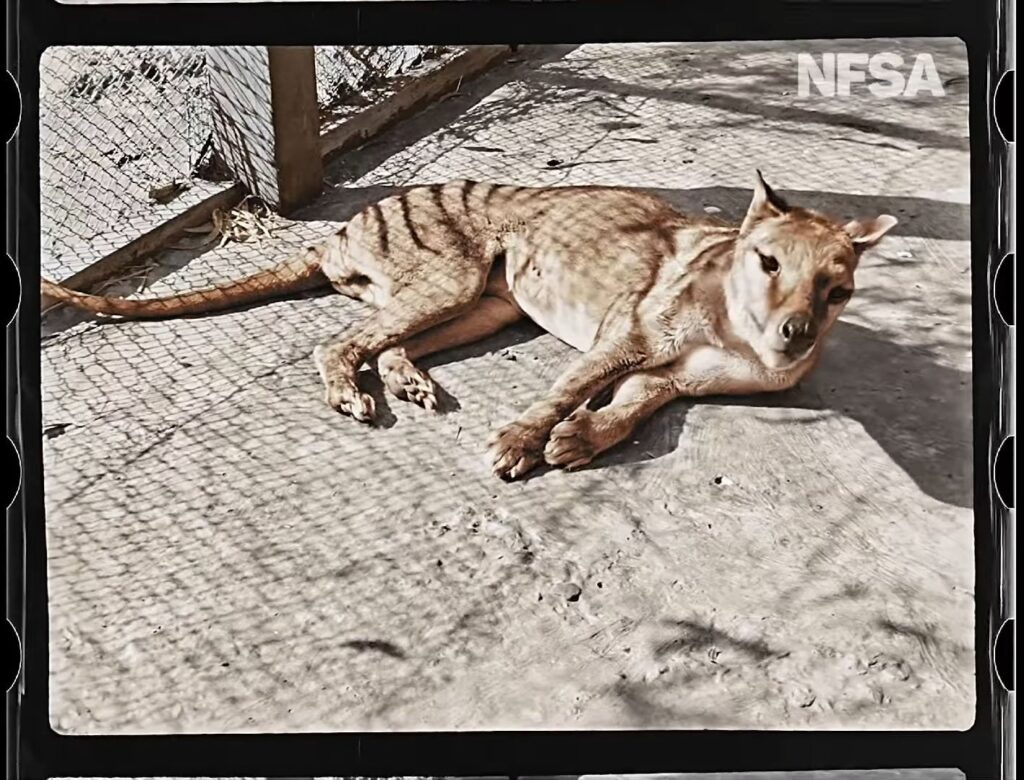
A recently digitized and color-enhanced newsreel from the year 1933 has brought forth a captivating glimpse of the Tasmanian Tiger, a creature that vanished from existence in 1936.
Released this week by the National Film and Sound Archive of Australia (NFSA), which preserves and shares Australia’s audiovisual heritage, the one-minute video was colorized by Samuel François-Steininger from Composite Films, a French visual effects studio.
Originally filmed in black-and-white by zoologist David Fleay, the footage captures Benjamin, the last documented thylacine, also known as the Tasmanian Tiger, in various activities such as standing, sitting, lying down, pacing, scratching, and yawning, depicted from different distances.

The colorized video distinctly reveals the Tasmanian Tiger’s characteristic stripes, from which it derives its popular name. Despite its tiger-like moniker, the thylacine was the largest carnivorous marsupial in the world and bore no relation to actual tigers.
Benjamin was housed at Beaumaris Zoo in Hobart, Tasmania’s capital, from 1931 until his death on September 7th, 1936, marking the extinction of his species. The primary reasons for the Tasmanian Tiger’s demise include intense bounty hunting and diseases transmitted by domestic dogs, leading to its official extinction declaration in 1986.



Only a handful of films documenting the thylacine survive today, totaling just over 3 minutes in length. These films were captured at either Beaumaris Zoo or London Zoo, where the last known specimen died in 1931.
Despite more than 200 reported sightings of the Tasmanian Tiger over the past 85 years, none have been definitively confirmed. Despite extensive searches, the use of camera traps, and substantial monetary rewards exceeding $1 million for live capture, conclusive evidence of the thylacine’s continued existence remains elusive.

Leave a Reply